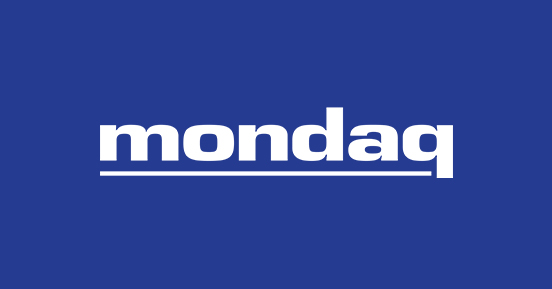The US Securities and Exchange Commission (“SEC”) and
the Commodity Futures Trading Commission (“CFTC”) have
overhauled Form PF and private fund managers have until March 12,
2025, to begin reporting on the new Form. The changes to the
reporting requirements mandated by the amendments to the Form
(“Form PF Amendments”) will require substantial
preparation by many managers.1
The Form PF Amendments are designed to enhance both the
SEC’s and the Financial Stability Oversight Council’s
(“FSOC”) monitoring of systemic risk, and strengthen the
regulatory oversight of private funds and investor protection
efforts.2 The Form PF Amendments were jointly adopted by
the SEC and CFTC on Feb. 8, 2024, with the Chairman of the SEC,
Gary Gensler, noting “since Form PF first was adopted [12
years ago], the SEC, CFTC, and FSOC have identified gaps in the
information . . . from private fund advisers . . . and amendments .
. . will enhance the [SEC’s, the CFTC’s,] and [the]
FSOC’s understanding of the private fund industry as well the
potential systemic risk posed by the industry and its individual
participants. In addition, the adoption also furthers investor
protection efforts.”
Form PF is the reporting form used by certain SEC-registered
investment advisers to private funds, including those that also are
registered with the CFTC as a commodity pool operator or commodity
trading adviser. The Form PF Amendments change how large hedge fund
advisers report the following, among other changes:
- Investment exposures;
- Borrowing and counterparty exposure;
- Market factor effects;
- Currency exposure;
- Turnover;
- Country and industry exposure;
- Central clearing counterparty reporting;
- Risk metrics;
- Investment performance by strategy;
- Portfolio liquidity; and
- Financing and investor liquidity.
In addition, the Form PF Amendments require additional basic
information about advisers and the private funds that they advise,
including identifying information, assets under management,
withdrawal and redemption rights, gross asset value and net asset
value, inflows and outflows, base currency, borrowings and types of
creditors, fair value hierarchy, beneficial ownership, and fund
performance.
The Form PF Amendments come just two months after the Dec. 11,
2023 effective date for the majority of the requirements under the
Form PF event-based reporting amendments finalized by the SEC in
May 2023.3
This Alert outlines certain key changes to Form PF
reporting requirements under the Form PF Amendments, as well as the
potential burden on private funds to revise their reporting
processes to comply with the Form PF Amendments.
Amendments to General Instructions – Impact on all
Filers
The Form PF Amendments include significant changes to the Form
PF General Instructions, which apply to all Form PF filers and are
intended to improve data quality and comparability and to enhance
systemic risk assessment. The amendments to the General
Instructions include:
1. Separate Reporting for each Component Fund of a
Master-Feeder and Parallel Fund Structure: The Form PF
Amendments’ most substantial change is the new requirement to
separately report each component fund of a master-feeder
arrangement or parallel fund structure, other than a feeder fund
that invests all of its assets in a single master fund, US treasury
bills, and/or cash and cash equivalents (defined as a
“disregarded feeder fund”).
Currently, Form PF allows for advisers to respond to questions
regarding master-feeder arrangements and parallel fund structures
either in the aggregate or separately, as long as they do so
consistently throughout the Form.4 The SEC was reluctant
to prescribe such an approach in 2011 when Form PF was originally
adopted, citing the potential burden on advisers as part of the
reporting framework. In the adopting release for the Form PF
Amendments (“Adopting Release”), the SEC explained that
given the disparities in approaches between Form PF filers, certain
risk profiles with respect to asset size, counterparty exposures
and/or investor liquidity have been obscured, and separate
reporting will improve data quality and comparability and enhance
systemic risk assessment.5
While advisers will now be required to report separately each
component fund of a master-feeder arrangement and parallel fund
structure, advisers will continue to aggregate these structures for
purposes of determining whether the adviser meets a reporting
threshold (e.g., in determining if the adviser is a large
hedge fund adviser).6 In explaining how disaggregated
reporting will improve the identification of risk exposures, the
SEC provided an example where a feeder fund may have counterparty
exposure, rather than the entire fund in the aggregate, as fewer
assets held at the feeder fund level would be available as
collateral and the counterparty may have greater
risk.7
As noted above, there is a carve out from the separate reporting
requirement for a “disregarded feeder fund”, which is a
feeder fund that invests all of its assets in (i) a single master
fund, (ii) US treasury bills, and/or (iii) cash and cash
equivalents.8 Advisers will identify a disregarded
feeder fund and look through to any disregarded feeder fund’s
investors in responding to certain questions regarding the master
fund’s investors (e.g., beneficial ownership).9 The
SEC views a disregarded feeder fund as not meaningful for data
analysis as the master fund is the conduit through which investment
is made, and such master fund’s activity is captured via the
Form.10
Advisers will continue to aggregate master feeder arrangements
and parallel fund structures for purposes of determining whether
the adviser meets a reporting threshold (e.g., in
determining if the adviser is a large hedge fund adviser). However,
the SEC adopted instructions stating that advisers should disregard
the holdings of feeder funds in their respective master fund’s
equity for the purposes of determining whether the
master-feeder arrangement compromises a qualifying hedge
fund, as this will avoid potential double
counting.11
Unchanged from the current Form PF, dependent parallel managed
accounts must be aggregated with the largest private fund to which
it relates. Advisers will continue to be required to report the
total value of all parallel managed accounts related to each
reporting fund.
In justifying this change to require separate reporting, the SEC
explained that such reporting would not be overly burdensome since
advisers already assemble aggregated data for determining Form PF
reporting categories, and any additional burdens are justified to
increase transparency and systemic risk monitoring.
2. Investments in other private funds (“fund of
funds”): Currently, advisers include the value of their
private funds’ investments in other private funds when
determining whether the adviser meets the threshold to file Form
PF. Currently, Form PF also generally allows an adviser to
disregard the value of equity investments in other private funds
for purposes of both the Form’s reporting category thresholds
(e.g., whether it qualifies as a large hedge fund adviser) and
responding to certain questions on Form PF, as long as the
reporting is done consistently throughout the Form subject to
certain exceptions.12
The Adopting Release retains this flexibility to allow advisers
to continue to include or exclude the value of such investments.
However, the SEC opted to amend Instruction 7 of the Form PF
General Instructions to include with more explicit language that
requires advisers to include the value of their investments in
private funds – whether internal or external – in
determining whether the adviser is required to file Form PF;
whether it meets the thresholds for reporting as a large hedge fund
adviser, large liquidity fund adviser, or large private equity fund
adviser; and whether a hedge fund is a qualifying hedge
fund.13
In explaining these changes, the SEC noted that the current
flexible standard provides unclear and inconsistent reporting and
data on the scale of a reporting fund’s exposures. Disagreeing
with a number of commentors regarding the increased burden of
reporting such information, the SEC remarked that advisers are
currently required to include investments in other private funds to
determine whether they meet the Form PF filing threshold and
fund-of-funds structures present risks because they are engaged in
direct investments.
The SEC retained elements of the instruction allowing for funds
that invest substantially all of their assets in other private
funds (and only holds cash and cash equivalents and instruments
acquired for the purpose of hedging currency exposure) to only
complete Section 1b of the Form, and not Section 1c. While the SEC
generally retained this exclusion, it modified the instructions to
change the language from “substantially all” to “80%
or more of its assets.”14
Currently, advisers are not required to, but nonetheless have
the option to, “look through” a reporting fund’s
investments in any other entity (including other private funds),
which the SEC commented has led to inconsistent data and
comparisons. As a result, Instruction 7 of the Form PF General
Instructions was amended further to require advisers to “look
through” a reporting fund’s investments in internal or
external private funds (other than a trading vehicle), unless the
question instructs the adviser to report exposure obtained
indirectly through positions in such funds or other entities. The
instructions were modified to require advisers that cannot avoid
“looking through” to the reporting fund’s investments
in internal private funds or external private funds to include an
explanation in response to Question 4.15
3. Trading Vehicles: Currently, Form PF does not
require advisers to report separate legal entities wholly or
partially owned by private funds that hold assets, incur leverage,
or conduct trading or other activities as part of the private
fund’s investment activities, but do not operate a business (a
“trading vehicle”). Given the fact that trading vehicles
aren’t currently identified, there is a blind spot for the SEC,
with the Adopting Release stating “Form PF does not provide a
clear window into the existence or use of trading vehicles and the
risks they may present.”
The Form PF Amendments require advisers to identify and report
information on any trading vehicles of the reporting fund,
regardless of whether the trading vehicle is wholly owned or
partially-owned. The types of information that advisers will be
required to report include how the reporting fund uses the trading
vehicle, position sizes, and counterparty exposures of the
reporting fund that are attributable to the trading vehicle. The
Form PF General Instructions were also amended to explain how
advisers will report information if the reporting fund uses a
trading vehicle – specifically, if the adviser uses a trading
vehicle, it will be required to be identified in Section 1b and
report answers for it and the fund on an aggregated
basis.16
While reporting will be done on an aggregated basis, the Form PF
Amendments add specific questions to Form PF that are designed to
assist the SEC in understanding the use of such trading vehicles
and identify risk exposures. This approach, the Adopting Release
stated, will help differentiate this level of reporting from that
of the reporting fund and emphasized the importance of this
information to provide more complete and accurate visibility into
asset class exposures, position sizes, counterparty exposures
relied on by trading vehicles, and systemic risk monitoring
generally.
4. Report Timing: To harmonize reporting information,
large hedge fund advisers and large liquidity fund advisers will be
required to update Form PF within a certain number of days after
the end of each calendar quarter, rather than each fiscal quarter.
All other advisers will continue to make annual filings within the
prescribed timeframe following the end of their fiscal year.
Additionally, all advisers will use fiscal quarters and years, when
relevant, to determine whether they are meeting filings
thresholds.17
The SEC cited disparities in the timing of reporting across this
category of advisers and the potential delays in seeing
comprehensive data across similarly situated funds. Analyzing Form
ADV data as of December 2022, the SEC noted that 0.4 percent of
large hedge fund advisers and large liquidity fund advisers do not
file on a calendar quarter basis, equating to about 224 private
funds. Based on the SEC’s own data, only a de minimis
segment of advisers will be impacted by this change. Nonetheless,
the SEC noted that discrepancies in reporting time creates gaps in
completeness of information they receive at a particular time, thus
degrading their data analysis and comparison capabilities. In its
first reference to the CFTC in the Adopting Release, the SEC also
noted that calendar reporting aligns with the CFTC’s CPO-PQR
reporting, allowing easier integration of data sets.
The Form PF Amendments do not impact private equity fund
advisers who will continue to file any required quarterly private
equity Section 6 event-based reports (adviser-led secondaries,
removal of adviser as GP, etc.) on a fiscal quarter basis.
Amendments to Section 1
Advisers required to file Form PF must complete some or all of
Section 1 with respect to the private funds it advises. Section 1
of Form PF includes certain identifying and demographic
information. The Adopting Release states that the amendments to
Section 1 are designed to (i) provide greater insight into private
funds’ operations and strategies, (ii) assist in identifying
trends, (iii) improve comparability across advisers, (iv) improve
data quality, and (v) reduce reporting errors. A number of
amendments have been made to Section 1, and we have highlighted the
notable amendments below:
- Withdrawal or Redemption Rights (Section 1b)
Currently, Form PF requires that only large hedge fund advisers
report whether their qualifying hedge fund(s) provide investors
with withdrawal or redemption rights “in the ordinary
course.”18 The Form PF Amendments require all
advisers to respond to Question 10(a) or 10(b), which require the
adviser to disclose whether the reporting fund is an “open-end
private fund” in Question 10(a) or a “closed-end private
fund” in Question 10(b). The SEC adopted newly defined terms
for “open-end private fund” and “closed-end private
fund” related to Question 10.19
If the reporting fund is an open-end private fund, the adviser
will be required to disclose (i) how often withdrawals or
redemptions are permitted by selecting a response from a list of
categories (in Question 10(c)) and (ii) what percentage of the
reporting fund’s net asset value may be, or is, subject to a
suspension of, or material restrictions on, investor
withdrawals/redemptions by an adviser or fund-governing body
pursuant to Question 10(d).
Advisers that disclose in Question 10 that the reporting fund is
neither an open-end private fund nor a closed-end private fund are
required to provide a “detailed explanation” in their
response to Question 4. These amendments are intended to improve
data quality by more precisely classifying how an adviser should
report on funds that offer limited withdrawal or redemption rights.
The SEC notes, in a carryover from the May 2023 amendments to Form
PF, that information on redemption rights will allow for SEC and
FSOC to analyze stress or potential strategies that may be
exacerbated by or result in fund failure based on investor
redemptions.
2. Gross Asset Value and Net Asset Value (Section
1b)
Large hedge fund advisers and large liquidity fund advisers will
be required to report their monthly net asset value and gross asset
value. However, to address comments regarding the potential burden
of monthly gross and net asset value calculations, advisers may use
the reporting fund aggregate calculated value (“RFACV”)
and newly defined gross reporting fund aggregate calculated value
(“GRFACV”), or the newly defined “gross reporting
fund aggregate calculated value” (“GRFACV”), if the
adviser does not calculate GAV or NAV on a monthly basis. This
additional information will be reported as of the end of each month
of the reporting period in the quarterly filings, rather than only
reporting the information as of the end of the reporting period, as
Form PF currently requires.20
Advisers should note the carryover of the RFACV framework from
the May 2023 event-based reporting amendments. Importantly, GRFACV
(and RFACV) may be calculated using the adviser’s or its
service provider’s methodologies, provided they are consistent
with information reported internally. Advisers will need to
indicate the methodology used to report in Questions 11 and 12.
The Form PF Amendments added new Question 13, which requires
advisers to separately report the value of unfunded commitments
included in the net and gross asset values reported in Questions 11
and 12. The asset value calculations in Questions 11 and 12 should
include unfunded commitments, so that Form PF data is comparable to
Form ADV data.
3. Inflows and Outflows (Section 1b)
Currently, large hedge fund advisers only report changes in
inflows or outflows on an annual basis, which, the Adopting Release
notes, causes this data to be stale and less effective than more
frequently reported data for monitoring systemic risk. The SEC also
stated that they’re currently unable to differentiate between
changes in value resulting from performance and changes in value
resulting from inflows and outflows.
In response, the newly added Question 14 now requires large
hedge fund advisers and large liquidity fund advisers to report
information concerning the reporting fund’s inflow and outflow
activity, including contributions to the reporting fund, as well as
withdrawals and redemptions, or other distributions of any kind to
investors for each month of the reporting period. Advisers must
include all new contributions from investors and exclude
contributions of committed capital that they have already included
in gross asset value calculated in accordance with Form ADV
instructions. Here again, these amendments entail the SEC obtaining
additional data throughout the reporting period by requiring this
monthly data.
4. Fund Performance (Section 1b)
The Form PF Amendments redesignate current Question 17 as new
Question 23, which requires all advisers to provide gross and net
fund performance “as reported to current and prospective
investors, counterparties, or otherwise” for specified fiscal
periods using the table provided in Form PF. Advisers must report
performance as a money-weighted internal rate of return (instead of
a time-weighted return), if the reporting fund’s performance is
reported to investors, counterparties or otherwise as an internal
rate of return since inception. Whether the adviser uses a
time-weighted or money-weighted rate of return, the methodology
used should be consistent over time.
If the adviser does not provide net performance or gross
performance information to investors, counterparties, or otherwise,
then they will be required to provide the most representative set
of performance information (if the adviser reports different fund
performance results to different groups), with an explanation of
its selection to be provided in Question 4.
The SEC acknowledged the potential inconsistencies between this
new requirement for reporting fund performance on Form PF and
certain other performance reporting rules. First, the SEC noted
that quarterly performance reporting is required under the Private
Fund Adviser Rule (“PFAR”), but did not address how PFAR
reporting should or would be reflected in Form PF. For example, it
is conceivable that an adviser’s quarterly performance
reporting pursuant to PFAR could use an alternate methodology from
that of Form PF. The SEC also acknowledged that calculations of net
and gross performance for Form PF may treat fees and expenses
differently than the calculation of net and gross performance under
the Marketing Rule, but notes that different audiences are
receiving this reporting.
5. Investment Strategies (Section 1c)
The Form PF Amendments to the investment strategies disclosed in
Section 1c require the disclosure of more granular strategies for
both equity and credit (e.g., private credit and
associated sub-strategies, such as direct lending) to both account
for the SEC’s evolved understanding of hedge fund strategies
and to improve data quality and comparability.
The adviser must choose the investment strategies that best
describe the reporting fund’s investment strategies, as of the
last day of the reporting period, to account for intra-quarter
changes to strategy. If the adviser selects “other”
they’ll need to describe their strategy and why none of the
available categories are sufficient.21 The strategy
disclosed in Section 1c should be consistent from one reporting
period to the next.
Notably, the SEC included both “digital assets” and
“litigation finance” as reportable investment strategies
in Section 1c, serving as an acknowledgment by the SEC that
investment strategies are not static and that they may evolve based
on technological changes and industry trends. With respect to
“digital assets,” the SEC stopped short of defining the
term for Form PF reporting purposes, but did acknowledge the
prevalence of funds employing such strategies and its status as an
asset class. With regard to the addition of “litigation
finance” as a reportable investment strategy, the SEC noted
that its addition to Section 1c, as well as other more granular
categories for credit strategies, are meant to allow the SEC and
FSOC to “conduct more targeted analysis and improve
comparability among advisers and hedge funds, which the [SEC] and
FSOC can use to identify and address systemic risk and investor
protection issues in times of stress more
accurately.”22
6. Counterparty Exposure (Section 1c)
Counterparty exposures is one of the key areas of focus for the
SEC and FSOC for purposes of systemic risk monitoring. These Form
PF Amendments are fairly extensive and include a new Question 26,
which requires advisers (other than qualifying hedge funds) to
complete a consolidated counterparty exposure table regarding
exposures the adviser has to creditors/counterparties, and the
exposures that creditors/counterparties have to the adviser.
Advisers will be required to report the dollar value of
borrowing and collateral received and lending and posted
collateral. The Form PF Amendments introduce newly defined terms,
“borrowing and collateral received (B/CR)” and
“lending and posted collateral (L/PC)”, with the SEC
stating that these definitions are based on their understanding of
borrowing and lending and helps ensure data quality and
comparability. Current Questions 22 and 23 have been redesignated
as Questions 27 and 28, and now provide more detailed instructions
for advisers to use when identifying the individual counterparties,
as well as the entity that has the reported exposure. Question 27
requires advisers to identify each creditor or other counterparty
(including central clearing counterparties) that owes an amount
(before posted collateral) equal to or greater than either (1) five
percent of NAV as of the data reporting date or (2) $1 billion.
Question 28 requires advisers to provide information for
counterparties where the fund has net mark-to-market counterparty
credit exposure which is equal to or greater than either (1) five
percent of NAV or (2) $1 billion, after taking into account
collateral received or posted by the reporting fund.
Qualifying hedge funds will complete similar counterparty
exposure questions in Section 2. Together, the questions in Section
1c and similar questions at Section 2 will allow the SEC and FSOC
to consolidate information relating to hedge funds’ and
qualifying hedge funds’ arrangements with creditors and other
counterparties.
Amendments to Section 2
The SEC rearchitected Section 2, which applies to large hedge
fund advisers, as indicated in the chart below:

The additional information large hedge fund advisers will be
required to disclose in amended Section 2 is intended to, among
other things, provide further insight into the operations and
strategies of qualifying hedge funds and their advisers. Below are
some of the notable amendments captured in Section 2:
- Separate Reporting for Positions Held Physically,
Synthetically or Through Derivatives & Indirect
Exposure
The Form PF’s current instructions (and the associated
definitions) require advisers to combine exposures held physically,
synthetically, or through derivatives when reporting certain fixed
income and other sub-asset classes. The current Form PF reporting
requirements, which allow advisers to aggregate their physical and
synthetically held positions, as well as long and short exposures,
obscures the SEC’s understanding of the fund’s overall
exposure because of the risk differences between such holdings,
which reduces the SEC’s and FSOC’s ability to effectively
assess systemic risk.
Advisers will now be required to report the dollar value of a
qualifying hedge fund’s long and short positions in certain
sub-asset classes by “instrument type” for each month of
the reporting period. These amendments introduce more granular
information as advisers will separately report long and short
positions in these sub-asset classes held physically, synthetically
or through derivatives, and indirectly through certain
entities.
2. Adjusted Exposure Reporting
Currently, advisers report “gross” long and short
exposure (i.e., the dollar value of a qualifying hedge fund’s
long positions and short positions for various sub-asset classes).
While retaining this reporting, the amendments require advisers to
also report the “adjusted” exposure of long and short
positions for each sub-asset class in which a fund has a reportable
position. The inclusion of adjusted exposure reporting is intended
to provide an additional datapoint and view into underlying risk
exposures, the SEC noting that gross exposure could lead to
potential false indicators of long/short exposure not
representative of the actual economic exposure and market risk of a
reporting fund’s portfolio.
3. Open and Large Positions
Open and large positions were called out by Chair Gensler in his
statement on the adoption of the Form PF Amendments, noting that
“the final rules will expand reporting requirements about a
large hedge fund’s open positions and certain large positions.
These requirements will provide insight into the extent of a
fund’s portfolio concentration and large exposures to any
specific assets. Such concentration or exposure may increase the
risk of amplified losses for investors. Gathering additional data
on concentration and exposure will help to protect investors and
assess systemic risk.”
Advisers to qualifying hedge funds will be required to report
their top five long and short netted positions and the top ten
netted long and short positions. Additionally, advisers will
provide more information regarding the total number of reference
assets for the fund’s long and short netted exposure, and
relative percentages of NAV based on these long and short netted
exposures.
Advisers will also be required to provide certain information on
a fund’s reference asset to which the fund has gross exposure
equal to or exceeding certain thresholds (e.g., 1 percent of NAV).
These amendments are intended to provide a more holistic view of
the reporting fund’s portfolio concentration.
4. Counterparty Exposure and Significant Counterparty
Reporting
The Form PF Amendments will require qualifying hedge funds to
report counterparty exposures using a new consolidated counterparty
exposure table (similar to the new consolidated counterparty
exposure table adopted in Section 1c), which will capture all cash,
securities, and synthetic long and short positions by a reporting
fund, a fund’s credit exposure to counterparties, and amounts
of collateral posted and received.
This consolidated counterparty exposure table replaces the
information currently required by Questions 43, 44, 45, and 47 of
the current Form PF, and requires, among other things, that
advisers report the qualifying hedge fund’s borrowings and
other transactions with creditors and other counterparties by type
of borrowing or transaction (e.g., unsecured, secured borrowing and
lending under a prime brokerage agreement, etc.) and the collateral
posted or received by a reporting fund in connection with each type
of borrowing or other transaction.
The new consolidated counterparty exposure table is designed to
capture information on all non-portfolio credit exposure that a
qualifying hedge fund has to its counterparties (including CCPs)
and the exposure that creditors and other counterparties have to
the fund.
For each qualifying hedge fund, advisers will also be required
to identify all creditors and counterparties (including CCPs) where
the amount a fund has borrowed (including any synthetic long
positions) before posted collateral is equal to or greater than
certain thresholds. For the top five creditors and other
counterparties from which the fund has borrowed the most, advisers
will be required to identify the counterparty (by name, LEI, and
financial institutional affiliation) and provide information
detailing a fund’s transactions and the associated
collateral.
Questions 42 and Question 43 will require the disclosure of
information about a reporting fund’s key individual
counterparties (including CCPs) to which the fund has net
mark-to-market counterparty credit exposure, as well as
counterparties to which the reporting fund has net mark-to-market
exposure above certain thresholds.
5. Additional Exposure Reporting
- Currency Exposure Reporting – The Form PF
Amendments create new Question 33, requiring large hedge fund
advisers to disclose (1) the net long value and short value of a
fund’s currency exposure arising from FX derivatives and all
other assets and liabilities and (2) each currency to which the
fund has long or short dollar value exposure equal to or exceeding
certain thresholds. - Turnover – The Form PF Amendments will require
disclosure on a per-fund basis of the value of turnover in certain
asset classes (rather than on an aggregate basis as currently
required). The amendments include new categories for turnover
reporting that disaggregate combined categories and better capture
turnover of potentially relevant securities (such as various types
of derivatives). - Country and Industry Exposure – The Form PF
Amendments will require advisers to provide information about each
country or industry to which a reporting fund has exposure equal to
or exceeding certain thresholds.
Effective and Compliance Dates
The effective date and compliance date of the Form PF Amendments
is March 12, 2025. The SEC noted that the one-year implementation
timeline would “provide time for advisers to prepare to comply
with the amendments, including reviewing the requirements, building
the appropriate internal reporting and tracking systems, and
collecting the required information, as well as to simplify the
compliance process and reduce potential confusion . .
.”23
While advisers may well be fatigued by the abbreviated six-month
timeline to implement the Form PF event-based reporting amendments,
advisers should consider discussing implementation plans, including
creating internal working groups across the various
departments/functions (e.g., legal, compliance, operations,
finance, etc.), as well as early outreach and coordination with
service providers.
Given the SEC’s prodigious rulemaking and other rule
implementations to balance, private fund advisers should not view
the one-year timeframe as a means to delay, as these amendments
will result in a marked change from current Form PF reporting
requirements.
Footnotes
1 Form PF; Reporting Requirements for All Filers and
Large Hedge Fund Advisers, 89 FR 17984 (March 12,
2024).
2 See Securities and Exchange Commission, Final
Rules, Form PF; Reporting Requirements for All Filers and Large
Hedge Fund Advisers, Release No. IA-6546; (Feb. 8, 2024)
(hereinafter, Final Rules).
3 See Form PF; Event Reporting for Large Hedge Fund
Advisers and Private Equity Fund Advisers; Requirements for Large
Private Equity Fund Adviser Reporting, Release No. IA-6297; (May 3,
2023); Schulte Roth & Zabel, Alert: SEC Form PF
Reporting Changes Effective Dec. 11, 2023, and June 11, 2024
(June 21, 2023), available here.
4 See Final Rules at 12.
5 See id.
6 See id.
7 See id. at 13.
8 The current definition of “cash and cash
equivalents includes “government securities” and Form PF
defines “government securities” as (1) U.S. Treasury
securities, (2) agency securities, and (3) any certificate of
deposit for any of the foregoing. The Form PF Amendments revise the
definition of “cash and cash equivalents” by removing
“government securities” from the definition of “cash
and cash equivalents.” The Form PF Amendments present
“government securities” as its own line item in the Form
PF Glossary of Terms. Further, the SEC adopted an amendment that
directs advisers to exclude digital assets when reporting
“cash and cash equivalents.”
9 In the case of a disregarded feeder fund in Question 6
of amended Form PF, advisers instead will identify the disregarded
feeder fund and look through to any disregarded feeder fund’s
investors in responding to certain questions regarding fund
investors on behalf of the applicable master fund.
10 See Final Rules at 13.
11 See Instruction 6 of the amended Form PF General
Instructions.
12 See Final Rules at 19-20.
13 See id. at 20.
14 See id. at 24.
15 See id. at 24-25.
16 See id. at 26-27 (Specifically, the Form PF
Amendments revise Instruction 7 and 8 to require advisers to
include information pertaining to their trading vehicles when
completing Form PF.)
17 See id. at 31.
18 See Form PF; Event Reporting for Large Hedge Fund
Advisers and Private Equity Fund Advisers; Requirements for Large
Private Equity Fund Adviser Reporting, Release IA-6297; (May 3,
2023), at Section 2b, Question 49.
19 See Final Rules at 69; 83.
20 See id. at 51-52.
21 The SEC cited that the amount of hedge fund exposure
that advisers attribute to the “other” category has grown
by 30 percent from the second quarter 2021 through the first
quarter 2023, according to analysis of Private Fund Statistics.
This increase has degraded the SEC’s data analysis
capabilities
22 See Final Rules at 76-77.
23 See Final Rules at 170.
The content of this article is intended to provide a general
guide to the subject matter. Specialist advice should be sought
about your specific circumstances.
#SEC #CFTC #Overhaul #Form #Securities










